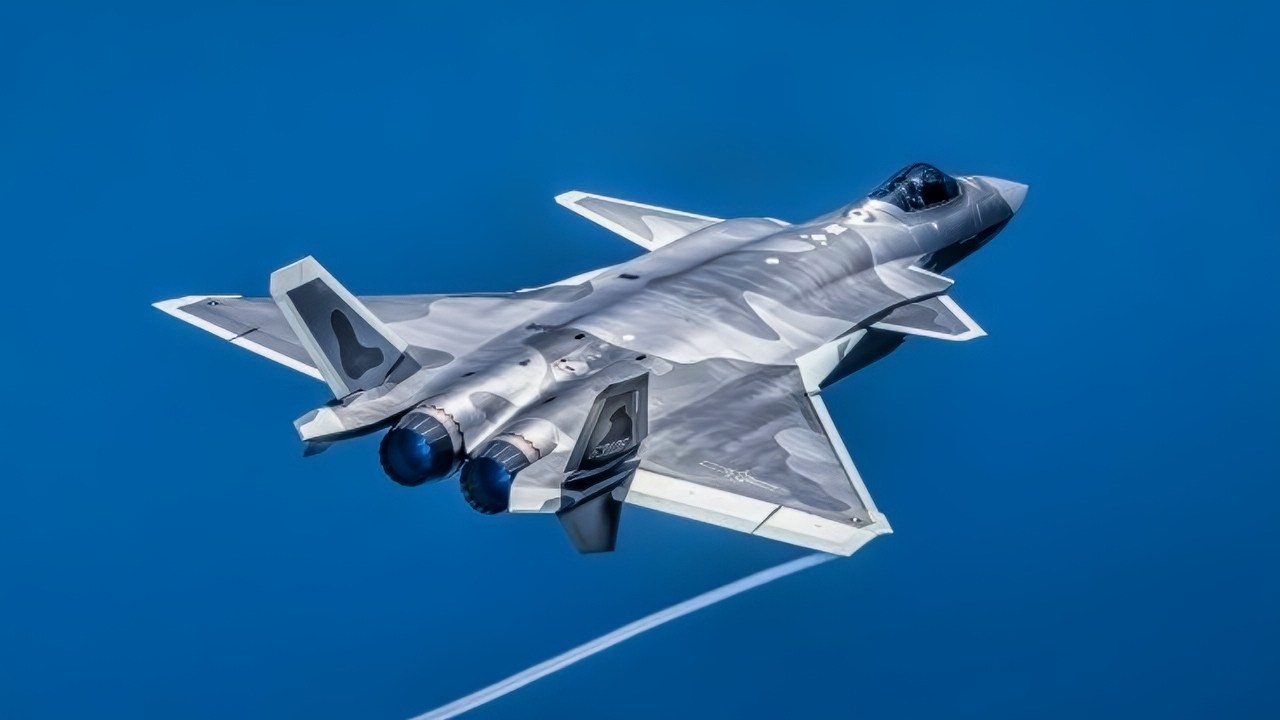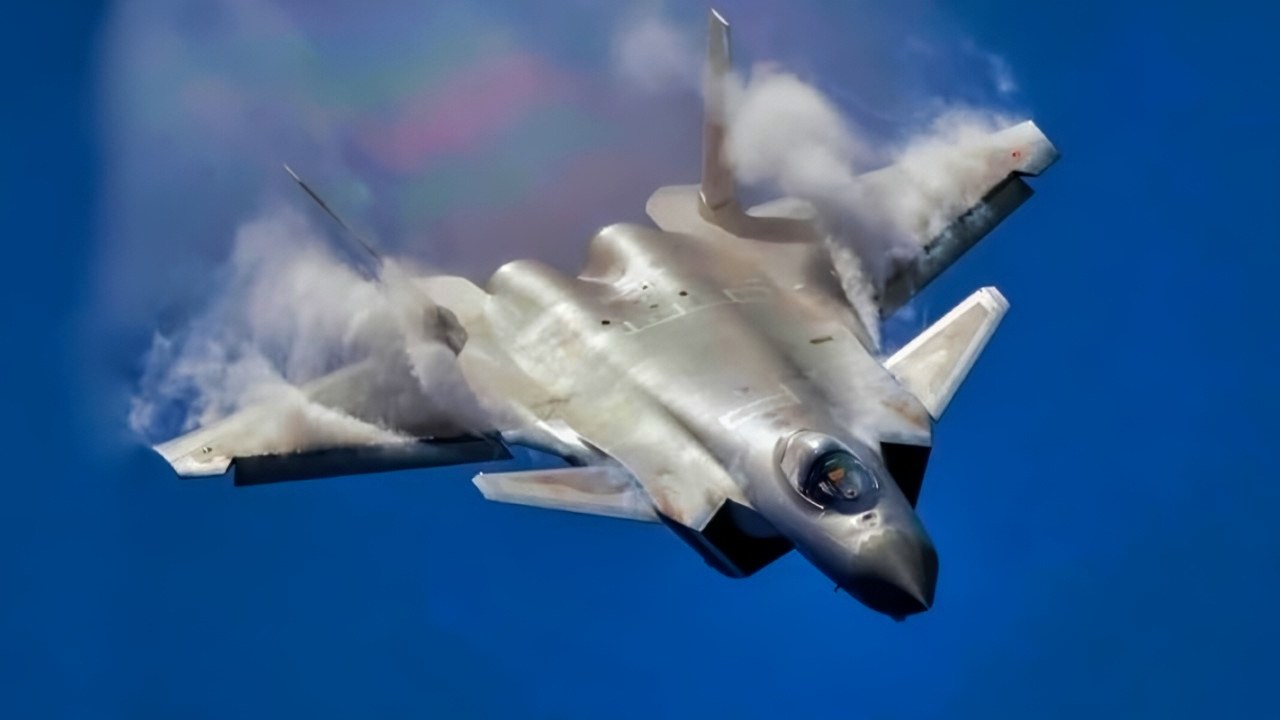Key Points and Summary – A review of the J-20 “Mighty Dragon’s” origin reveals its rapid development as a direct response to the U.S. F-22.
-The program (J-XX) began in the late 1990s, with the first prototype flying in 2011, and the jet entering service by 2017.

China’s J-20 Stealth Fighter. Image Credit: Chinese Weibo/Screenshot.

China J-20S Fighter. Image Credit: Creative Commons.
-While it lacks the combat experience of the F-22 and F-35, its production numbers are notable.
-As of 2025, China has built over 300 J-20s, far surpassing Russia’s 32 Su-57s and gaining on the 187-jet F-22 fleet, which was “incredibly shortsightedly” canceled in 2009.
China’s J-20 Mighty Dragon: Built to Fight U.S. Stealth Fighters
The Chengdu J-20 Mighty Dragon is China’s fifth-generation stealth fighter, a counter to the American-made F-22 Raptor and F-35 Lightning II, and Russia’s Sukhoi Su-57 Felon.
Much ink has been spilled about the Mighty Dragon’s strengths and weaknesses vis-à-vis the U.S. stealth planes (both of which are products of Lockheed Martin’s famed “Skunk Works” division).
The fighter is already well known, but its early history is not.
Accordingly, National Security Journal now takes a deeper dive into the origins of the J-20, and why the People’s Liberation Army Air Force (PLAAF) decided to develop it.
China’s Stealth Fighter Is Born
The obvious rationale for a fifth-generation fighter was the need to compete with China’s great power adversary, the United States, in the stealth fighter arena. But there is a lot more to it than that.
Before the J-20 debuted, the PLAAF’s most sophisticated fighter jet was arguably the 4.5 Generation J-10C Vigorous Dragon, which, like the J-20, is made by the Chengdu Aircraft Corporation.
In official operational service since 2002, the J-10C remains a highly capable warbird in its own right.

J-10. Image Credit: Creative Commons.
It demonstrated its prowess in May during a conflict between India and Pakistan (known in India as Operation Sindoor), during which Pakistani Air Force J-10s shot down at least one Indian Air Force planes—and possibly as many as five, including a French-made Dassault Rafale.
Another Chinese 4.5-generation warbird is the J-16 Qianlong “Hidden Dragon,” which debuted circa 2015 and is produced by Shenyang Aircraft Corporation.
In any event, the J-20 traces its roots back to China’s J-XX program, which was launched in the late 1990s as a response to the F-22.
By 2008, the program was formally approved under the designation Project 718, and development intensified. The first prototype—bearing tail number “2001”—made its maiden flight on Jan. 11, 2011, and it sent a message to the Western world that Beijing had officially entered the stealth era.
Number “2001” was soon followed by prototypes “2002” and “2011,” which introduced more refined stealth features such as divertless supersonic inlets and advanced radar-resistant protective coatings.

J-20 Fighter from China. Image from PLAAF.

J-20S Fighter Chinese Internet Image.
Low-rate initial production began in December 2015, leading to mass production following design finalization in October 2017.
The PLAAF officially introduced the Mighty Dragon into service on March 9, 2017, with the first combat unit declared operational by February 2018.
Not content to rest on its laurels, Chengdu turned its focus to upgrades, including thrust-vectoring engines and a dual-seat variant known as either the J-20S or the J-20B, depending on which source you consult.
Chronological Comparisons
For historical reference, the F-22 made its maiden flight on Sept. 7, 1997, and was officially introduced on Dec. 15, 2005, while the F-35 first flew on Dec. 15, 2006, and made its operational debut—with the U.S. Marine Corps F-35B variant—on July 31, 2015.
Meanwhile, the Su-57 Felon made its maiden flight on Jan. 29, 2010, but didn’t enter into the production phase until 2019 and didn’t finally attain operational status until the following year, making it the Vanya-come-lately of the stealth fighter race.
Present Status of the J-20
The J-20 has not yet been tested in real-world combat, unlike the battle-proven F-22 and F-35.
That said, it has already attained respectable production numbers, exceeding 300 airframes, according to Wiley Stickney of Bolt Flight.
Meanwhile, a measly 32 Su-57s have been built as of December 2023, while production numbers for the F-35 and F-22 sit at 1,255 and 187 respectively.
(The latter figure remains frozen in place due to then-U.S. Secretary of Defense Bob Gates’ incredibly shortsighted decision back in 2009 to kill the Raptor program).
About the Author: Christian D. Orr, Defense Expert
Christian D. Orr is a Senior Defense Editor. He is a former Air Force Security Forces officer, Federal law enforcement officer, and private military contractor (with assignments worked in Iraq, the United Arab Emirates, Kosovo, Japan, Germany, and the Pentagon). Chris holds a B.A. in International Relations from the University of Southern California (USC) and an M.A. in Intelligence Studies (concentration in Terrorism Studies) from American Military University (AMU). He is also the author of the newly published book “Five Decades of a Fabulous Firearm: Celebrating the 50th Anniversary of the Beretta 92 Pistol Series.”
A ‘Small War’ Against Venezuela Is a Really Big Mistake
The Air Force’s Mach 2 F-15C/D Fighter Isn’t Going Anywhere
The United Kingdom Has a Message for the F-35 Stealth Fighter











bis-biss
November 7, 2025 at 8:58 pm
J-20 came into being when numerous US aircraft were budily buzzing just outside china’s frontgate, nite and day, and NATO had brazenly bombed the large important embassy in belgrade, while in the US, the air force was already flying the fabled f-22.
But today, things are far different from those found or present in the halcyon period under clinton.
Today, with PAC forces on the fast ascendant, with their new weapons like the agm-181, HACM, PrSM and jassm and others under testing and awaiting deployment, j-20 is seen as derelict tech
So, what must replace j-20 ?
The answer lies in (within) the ongoing dilemma confronting the shenzhou-20 crew which is currently stuck in LEO.
THE CREW CAN’T COME HOME NOW BECUZ their craft has been afflicted by space debris collisions or strikes.
The crew must blame xi jinping for their situation.
Xi’s failure to speed up development of his country’s spaceplanes & space shuttles and spacegliders mean that people cannot be rescued from LEO in an emergency becuz no spaceplane’s available.
Spaceplanes and space shuttles are vital to confront the pac forces TODAY, now, in 2025.
Not the stupid j-20.
Fy
November 8, 2025 at 8:26 pm
J20 tried hard to match F22 performance revealed recently cheated by Lockheed therefore J20 performance surpassed F22.